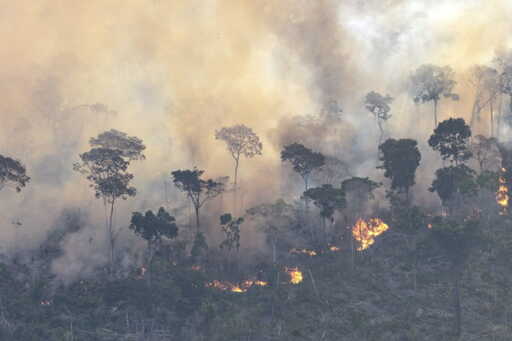In 2024, the Amazon Rainforest underwent its most devastating forest fire season in more than two decades. According to a new study by the European Commission’s Joint Research Centre, the fire-driven forest degradation released an estimated 791 million metric tons of carbon dioxide in 2024, a sevenfold increase compared with the previous two years. The carbon emissions from fires in 2024 surpassed those from deforestation for the first time on record. Brazil was the largest contributor, accounting for 61% of these emissions, followed by Bolivia with 32%, the study found. “The escalating fire occurrence, driven by climate change and unsustainable land use, threatens to push the Amazon towards a catastrophic tipping point,” the authors write. “Urgent, coordinated efforts are crucial to mitigate these drivers and to prevent irreversible ecosystem damage.” The researchers estimated that the total emissions from deforestation and fire-driven degradation in the Amazon in 2024 was 1,416 million metric tons of CO2. This is higher than Japan’s CO2 emissions in 2022, which ranked fifth after China, the U.S., India and Russia. The 2023-24 Amazon drought was one of the most severe in recent history, fueled by the El Niño phenomenon, which causes lower rainfall in the region. Water levels in the Amazon’s main rivers, including the Solimões, Negro and Madeira, dropped to their lowest in more than 120 years. Human-driven climate change has in fact made the Amazon Rainforest nearly 30 times more prone to fire, the 2023-24 State of Wildfires report found. However, most blazes in 2024…This article was originally published on Mongabay
From Conservation news via this RSS feed


